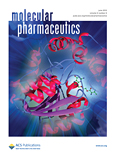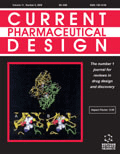
Pharmaceuticals
Scope & Guideline
Transforming Ideas into Breakthroughs in Drug Development
Introduction
Aims and Scopes
- Drug Discovery and Development:
Focuses on the identification and optimization of new drug candidates, including small molecules, biologics, and natural products. This area includes research on the mechanisms of action, structure-activity relationships, and the use of computational methods for drug design. - Pharmacokinetics and Pharmacodynamics:
Investigates the absorption, distribution, metabolism, and excretion of drugs, along with their biological effects. This includes studies on drug interactions, bioavailability, and the influence of genetic and environmental factors on drug response. - Formulation Science:
Explores novel drug formulations, including nanoparticles, liposomes, and other delivery systems aimed at enhancing therapeutic efficacy and minimizing side effects. This area emphasizes the development of smart drug delivery systems, including those utilizing nanotechnology. - Clinical and Translational Research:
Encompasses studies that bridge laboratory findings with clinical applications, focusing on the effectiveness and safety of therapies in real-world settings. This includes pharmacovigilance, real-world evidence, and patient-centered outcomes. - Natural Products and Traditional Medicine:
Examines the pharmacological properties of compounds derived from natural sources, including herbs and other botanicals. Research in this area often includes ethnopharmacological approaches and the integration of traditional medicine with modern therapeutic practices. - Innovative Technologies in Drug Delivery:
Covers advancements in the technologies used for drug delivery, such as microfluidics, 3D printing, and nanotechnology. This scope also includes the use of artificial intelligence and machine learning in drug discovery and development.
Trending and Emerging
- Artificial Intelligence and Machine Learning in Drug Discovery:
Increasingly, researchers are employing AI and machine learning techniques to streamline drug discovery processes, optimize formulations, and predict drug interactions, indicating a significant trend towards computational approaches. - Focus on Personalized Medicine:
There is a growing emphasis on personalized medicine, with research aimed at tailoring therapies based on individual genetic, metabolic, and phenotypic profiles, reflecting a shift towards more patient-centered approaches. - Integrative Approaches to Therapy:
The integration of natural products with modern pharmaceutical agents is gaining traction, leading to the development of hybrid therapies that combine the strengths of both traditional and contemporary medicine. - Targeted Drug Delivery Systems:
Advancements in nanotechnology and biomaterials are driving research into targeted delivery systems that improve the efficacy and safety of drugs, particularly in oncology and chronic diseases. - Pharmacogenomics and Precision Pharmacotherapy:
Research is increasingly focusing on pharmacogenomic factors influencing drug response, aiming to optimize treatment regimens based on genetic predispositions and variations.
Declining or Waning
- Conventional Drug Formulations:
Research focusing solely on traditional oral formulations without innovative delivery systems is decreasing, as the field shifts towards more complex and effective delivery mechanisms. - Pharmacological Studies on Established Drugs:
There is a noticeable reduction in studies centered on the pharmacology of well-established drugs, as the focus has shifted towards novel therapies and drug repurposing strategies. - Basic Mechanistic Studies:
Research that primarily investigates basic mechanistic pathways without translational implications is becoming less prominent, with a growing emphasis on studies that connect laboratory findings to clinical applications. - Single-Target Drug Development:
The trend is moving away from the traditional 'one drug, one target' paradigm towards multi-target approaches and combination therapies, reflecting a broader understanding of disease complexity.
Similar Journals

PHARMACIA
Empowering innovation in pharmacy and pharmacology.PHARMACIA is a distinguished open-access journal, published by PENSOFT PUBLISHERS, that has been a pivotal platform for advancing the field of pharmaceutical sciences since 2007. This journal, with ISSN 0428-0296 and E-ISSN 2603-557X, is based in Bulgaria and continues to publish high-quality research and reviews relevant to pharmacy, pharmacology, and toxicology. Recognized in the Q3 category for Pharmaceutical Sciences and Pharmacology (medical), as well as Q2 in Pharmacy according to the latest rankings, PHARMACIA is celebrated for its commitment to fostering knowledge dissemination and innovation in drug development, therapeutic approaches, and pharmacological research. With a Scopus rank of #17 in Pharmacy and recognition in various health professions, the journal attracts contributions from researchers, professionals, and students seeking to impact the pharmaceutical landscape. Its convenient open-access format ensures that articles are readily available to a global audience, encouraging collaboration and advancement in the life sciences.

Pharmaceutics
Transforming ideas into impactful pharmaceutical solutions.Pharmaceutics is a prestigious journal published by MDPI, specializing in the field of pharmaceutical sciences. With its Open Access model established in 2010, it promotes the dissemination of cutting-edge research, catering to a global audience of researchers, professionals, and students alike. Based in Switzerland, the journal has rapidly gained recognition, currently holding an impressive Q1 ranking in the pharmaceutical science category for 2023 and achieving a Scopus ranking of #32 out of 183 in the domain of Pharmacology, Toxicology, and Pharmaceutics, placing it in the 82nd percentile. The journal's objectives include advancing knowledge in drug formulation, delivery systems, and therapeutic applications, ensuring that published works contribute significantly to both academic discourse and practical applications in the pharmaceutical industry. As part of its commitment to excellence, Pharmaceutics welcomes high-quality manuscripts that inspire innovation and foster collaboration in this vital field.

PHARMACEUTICAL RESEARCH
Leading the charge in pharmaceutical science and drug development.PHARMACEUTICAL RESEARCH, published by SPRINGER/PLENUM PUBLISHERS, is a leading journal in the ever-evolving field of pharmaceutical sciences. With an ISSN of 0724-8741 and an E-ISSN of 1573-904X, this journal has established itself as a critical hub for disseminating innovative research from 1984 to 2024. The journal holds impressive rankings in prominent categories, including Q2 in Biotechnology and Q2 in Pharmaceutical Science, reflecting its robust impact on the global scientific community. The journal aims to provide researchers, professionals, and students with high-quality articles that contribute significantly to the advancement of drug development and medicinal applications. Although it does not currently offer Open Access options, its rigorous peer-review process ensures that only the highest caliber research is published, making it a valuable resource for those seeking to stay at the forefront of pharmaceutical innovation.

Drug Delivery and Translational Research
Transforming Research into Real-World Solutions.Drug Delivery and Translational Research (ISSN: 2190-393X | E-ISSN: 2190-3948), published by Springer Heidelberg, stands at the forefront of the Pharmaceutical Sciences discipline, boasting a prestigious impact factor as evidenced by its Q1 category ranking in 2023. This esteemed journal is dedicated to the vital intersection of drug delivery systems and translational research, aiming to bridge the gap between laboratory findings and clinical applications. It features groundbreaking studies that enhance our understanding of drug pharmacokinetics, formulations, and patient-centered research, making it indispensable for researchers, professionals, and students striving to innovate and excel in the field. While the journal operates under a subscription model, its commitment to disseminating high-quality research is reflected in its Scopus rank, placing it in the top 6% of its category (Rank #11/183, 94th percentile). Since its inception in 2011, it has garnered significant attention, promoting advances in pharmacology, toxicology, and pharmaceutics, and continues to be a platform for vital discourse and discovery.

Pharmaceutical Sciences
Pioneering research at the intersection of science and health.Pharmaceutical Sciences, an esteemed journal published by Tabriz University of Medical Sciences, Faculty of Pharmacy, serves as a crucial platform for the dissemination of pioneering research in the fields of pharmaceutical science, pharmacology, and toxicology. With an impact factor reflective of its substantial contribution to the scientific community, this open access journal has been accessible since 2012, ensuring that researchers, professionals, and students worldwide can engage with its rich content. Located in Iran, it has continually evolved, covering research from 2009 to 2024, and boasts impressive rankings in multiple Scopus categories, including Q3 in Pharmaceutical Science and Q2 in Pharmacology, Toxicology and Pharmaceutics. By bridging gaps between scientific inquiry and practical applications, Pharmaceutical Sciences is dedicated to advancing pharmaceutical knowledge and promoting innovative practices that address significant health challenges.

JOURNAL OF PHARMACY AND PHARMACOLOGY
Connecting researchers to the pulse of pharmaceutical innovation.Journal of Pharmacy and Pharmacology, published by Oxford University Press, is a prestigious academic journal dedicated to the advancement of knowledge in the fields of pharmaceutical sciences and pharmacology. With a strong heritage dating back to 1949, this journal maintains a robust influence, as evidenced by its ranking in the second quartile (Q2) across both Pharmaceutical Science and Pharmacology categories for 2023. The journal is accessible without an open access option, ensuring traditional academic engagement and providing valuable insights for researchers and professionals. It boasts an impressive Scopus ranking, with a percentile positioning of 72nd in Pharmaceutical Science and 67th in Pharmacology. Aimed at fostering innovative research and facilitating the exchange of cutting-edge scientific knowledge, the Journal of Pharmacy and Pharmacology serves as an essential resource for scientists, students, and healthcare professionals committed to enhancing therapeutic outcomes and advancing pharmaceutical innovations.

MOLECULAR PHARMACEUTICS
Unraveling Molecular Mechanisms for Enhanced Drug DiscoveryMOLECULAR PHARMACEUTICS, published by the American Chemical Society, stands as a pivotal journal within the fields of Drug Discovery, Molecular Medicine, and Pharmaceutical Science, as evidenced by its impressive rankings in various categories, including Q1 in Drug Discovery and Pharmaceutical Science. With an ISSN of 1543-8384 and an E-ISSN of 1543-8392, this journal has been at the forefront of research since its inception in 2004 and continues to foster innovation and collaboration among researchers, professionals, and students well into 2024. The journal is noted for its significant impact, having achieved a Scopus ranking of #31 in Pharmaceutical Science and #36 in Drug Discovery, placing it in the top percentiles of the respective fields. While it currently does not offer Open Access, MOLECULAR PHARMACEUTICS remains an essential resource for advancing the understanding of molecular mechanisms in drug development and therapeutic strategies, ensuring that cutting-edge findings reach a wide audience and contribute to the progression of pharmaceutical sciences.

CURRENT PHARMACEUTICAL DESIGN
Transforming Research into Revolutionary Drug SolutionsCURRENT PHARMACEUTICAL DESIGN is a leading journal in the fields of Drug Discovery and Pharmacology, published by Bentham Science Publishers Ltd in the dynamic United Arab Emirates. With an impressive historical span from 1995 to 2024, this journal serves as a vital platform for disseminating innovative research findings, breakthrough methodologies, and critical reviews that shape the future of pharmaceutical sciences. Ranked Q2 in both Drug Discovery and Pharmacology categories according to the 2023 metrics, it places itself within the top-tier percentile, catering to a diverse audience of researchers, industry professionals, and students. The journal’s commitment to high-quality research exploration is evidenced by its Scopus ranking, where it is positioned favorably within its category ranks. Although currently not Open Access, CURRENT PHARMACEUTICAL DESIGN remains an essential resource for those looking to stay at the forefront of pharmacological advancements and drug development strategies.

TROPICAL JOURNAL OF PHARMACEUTICAL RESEARCH
Elevating pharmaceutical discourse in tropical regions.Tropical Journal of Pharmaceutical Research is an esteemed open-access platform dedicated to advancing the field of pharmaceutical sciences, published by the Pharmacotherapy Group in Nigeria. With an ISSN of 1596-5996 and open access established since 2002, this journal serves as a critical resource for researchers, professionals, and students seeking to disseminate and access high-quality research in both pharmaceutical science and pharmacology. Despite its ranking in the third quartile (Q3) for Pharmaceutical Science and the fourth quartile (Q4) in Pharmacology as of 2023, the journal continues to stand out with its commitment to fostering significant dialogue and innovation in the scientific community. Anchored at the University of Benin, Faculty of Pharmacy, the journal invites contributions that explore novel pharmaceutical research, clinical applications, and drug development, playing a vital role in addressing health challenges that are particularly relevant to tropical regions. Researchers can look forward to publishing their findings in a journal that not only promotes the sharing of knowledge but also enhances the scientific discourse within a rapidly evolving field.

Journal of Pharmaceutical Investigation
Advancing pharmaceutical knowledge through innovative research.Journal of Pharmaceutical Investigation, published by SPRINGERNATURE, is a leading academic resource in the field of pharmaceutical sciences, offering critical insights and innovative research findings. With an impact factor that underscores its significance, this journal ranks in the Q1 category for both Pharmacology and Pharmaceutical Science as of 2023, showcasing its high-quality publications and rigorous peer-review processes. Operating from the Netherlands, the journal spans from 2012 to 2024, offering a rich archive of interdisciplinary research contributions that advance knowledge in pharmacology, toxicology, and pharmaceutics. It holds impressive Scopus rankings, placing it among the top-tier journals in its categories, which enhances its appeal to researchers, professionals, and students aiming to publish their work or stay up-to-date with the latest advancements in the pharmaceutical field. Engaging with the Journal of Pharmaceutical Investigation not only enriches your understanding but also connects you with a community dedicated to advancing healthcare and therapeutic innovations.